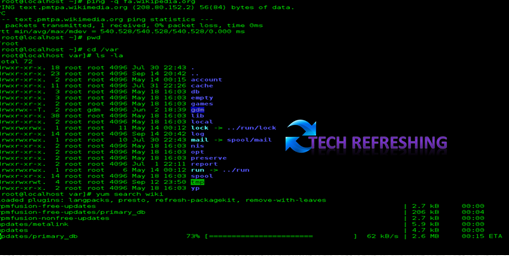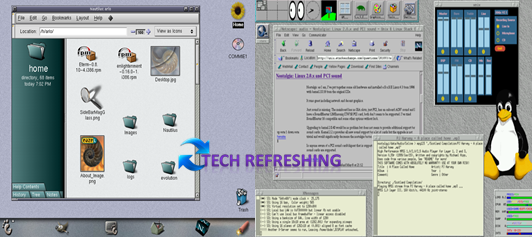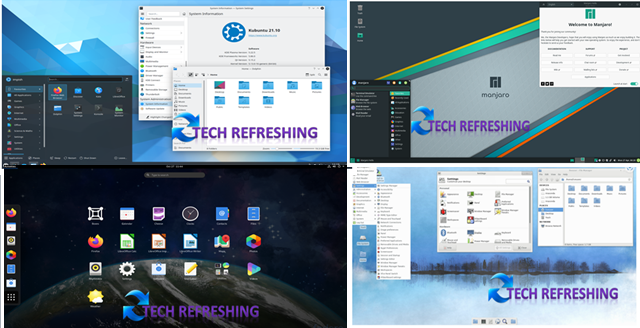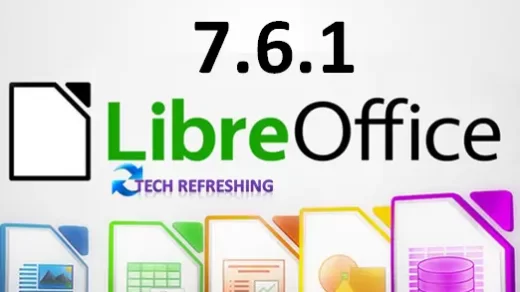The History and Evolution of Linux: From Command Line to Modern User Interface
Brief Overview of Linux
Introduced in 1991 by Linus Torvalds, Linux is an operating system that is available for free and built on the Unix-like system architecture. The open-source nature of Linux, which grants access to source code and allows for modifications and distribution, has contributed to its widespread adoption. Moreover, Linux is renowned for its stability, reliability, and security, making it an appealing option for servers and other crucial systems.
Importance of Linux in the Tech Industry
The impact of Linux on the tech industry has been remarkable, especially in the server market. Over 90% of the world’s supercomputers use Linux, and it is extensively used in web servers, cloud computing, and other essential infrastructure. Linux serves as the foundation of the Android mobile operating system, which dominates the smartphone market, powering more than 70% of devices globally. Furthermore, Linux has made noteworthy progress in the desktop market in recent years, as popular distributions like Ubuntu and Fedora have developed a devoted user base.
Purpose of the Blog Post
This blog post aims to investigate the historical and evolutionary journey of Linux, from its nascent days as a command-line interface to its current modern state as an operating system featuring a graphical user interface. It will explore the origins of Linux, its progression throughout the years, and the profound influence it has had on the technology industry. Additionally, this post will scrutinize the benefits and drawbacks of various user interfaces employed in Linux and deliberate on the potential future of the operating system. Readers will gain an improved comprehension of the history, significance, and current position of Linux in the technology sector by the conclusion of this article.
The Origins of Linux
The Development of Unix and Its Impact on Linux
The ancestry of Linux can be attributed to the birth of the Unix operating system in the 1960s and 70s. The pioneering minds at Bell Labs, including Ken Thompson and Dennis Ritchie, formulated Unix, which rapidly garnered recognition for its versatility and cross-platform compatibility. The fundamental concepts and design philosophies utilized in Unix, such as the implementation of a shell and command-line interface, would subsequently be assimilated into Linux.
During the 1980s, Unix became a commercialized product sold by corporations such as AT&T and Sun Microsystems, creating apprehension about the exclusive nature of the operating system. This concern prompted the creation of open-source and free Unix-like systems such as BSD and GNU, which would subsequently inspire the development of Linux.
Linus Torvalds and the Creation of Linux
In 1991, Linus Torvalds, a Finnish computer science student, commenced developing his own operating system as a personal project. He derived his work from the Minix operating system, a Unix-like system intended for educational purposes. Torvalds christened his creation “Linux,” a term coined from a combination of his first name and Unix.

Upon releasing the initial version of Linux to the general public in September 1991, Torvalds garnered a following of developers and enthusiasts. Although early Linux versions were solely command-line-based and lacked many modern operating system features, they were dependable and resilient, which boosted their popularity for server application.
The Early Days of Linux and Its Growth
During Linux’s early stages, its development was largely community-driven, with volunteers contributing code and improvements to the system. As the operating system’s popularity grew, commercial enterprises such as Red Hat and SUSE began offering paid distributions of Linux, which featured support and additional functionalities.
The widespread use and development of Linux were greatly influenced by the incorporation of the GNU General Public License (GPL), which guaranteed perpetual accessibility of the source code and authorized unrestricted modification and distribution by anyone. As a result, a vibrant community of developers and users emerged, enabling them to work together to enhance Linux and innovate new software applications.
Currently, Linux has emerged as a highly sought-after operating system globally, with a wide range of applications ranging from servers and supercomputers to smartphones and consumer electronics. Its open-source characteristic and adaptable features have maintained its popularity among both users and developers.
The Command Line Interface Era

Introduction of Command Line Interface
During its early development, Linux heavily depended on a command-line interface (CLI) to interact with the operating system. The CLI, a textual interface that enables users to enter commands to execute tasks or access system resources, was the primary mode of system interaction during the initial phase of Linux and continues to play a significant role in the operating system to date.
Command Line Tools and Utilities
The CLI offers a significant benefit due to the diverse assortment of tools and utilities accessible for system management. Linux comes equipped with an extensive array of command-line tools and utilities, several of which have been adopted from Unix and other operating systems. These tools are capable of executing various tasks, from managing files and directories to configuring network settings and administering system resources.
Some of the most commonly used command-line tools in Linux include:
- ls: Lists the contents of a directory
- cd: Changes the current directory
- cp: Copies files or directories
- mv: Moves or renames files or directories
- rm: Removes files or directories
- grep: Searches for text in a file or output from another command
- ps: Shows information about running processes
- top: Displays real-time system resource usage
Advantages and disadvantages of command line interface
Flexibility and power are the key advantages of the CLI. When equipped with the appropriate commands and utilities, users can perform intricate tasks swiftly and competently. The CLI additionally facilitates effortless automation of tasks using scripts and other tools.
Nonetheless, the CLI can be daunting for users who lack experience with command-line interfaces. Learning the commands and syntax requires time, and errors can lead to severe consequences. Moreover, the CLI may not be the optimal alternative for tasks that necessitate a visual interface or more intricate interactions with the system.
Despite its challenges, the CLI continues to be a crucial component of Linux, and numerous users and developers still depend on it for administering their systems.
The Graphical User Interface Era

The Rise of GUI
During the early stages of Linux development, the CLI served as the principal mode of interaction. However, the advent of graphical user interfaces (GUIs) in the 1990s and 2000s transformed the way users engaged with the operating system. GUIs present users with a visual interface comprising windows, icons, and menus that make tasks more instinctive and comprehensible.
GUIs became increasingly prevalent in Linux, partly due to the popularity of desktop environments that offered a uniform appearance and experience throughout the operating system. Desktop environments like GNOME and KDE gained traction among Linux users and remain in use today.
The Transition to Desktop Environments
Desktop environments provided a number of benefits for Linux users, including:
- Easier navigation: Desktop environments provided a more intuitive interface for navigating the file system and accessing system resources.
- Better integration: Desktop environments provided a more cohesive and integrated experience across the operating system, with consistent menus, toolbars and settings.
- Accessibility: GUIs made Linux more accessible to users who may not be comfortable with the command line or who may have visual or physical impairments.
The rise of desktop environments also led to the development of graphical package managers, which made it easier for users to install and manage software on their Linux systems.
Advantages and Disadvantages of GUI
While GUIs provide many advantages, they are not without their drawbacks. Some of the disadvantages of GUIs in Linux include:
- Resource usage: GUIs require more system resources than command-line interfaces, which can be a problem on systems with limited processing power or memory.
- Complexity: While GUIs make tasks easier to understand, they can also be more complex and difficult to customize than command-line interfaces.
- Dependency on hardware: GUIs may not work well on older or less powerful hardware, which can limit the usefulness of Linux on some systems.
Notwithstanding the obstacles, the popularity of GUIs in Linux persists, and numerous users favor the convenience and accessibility they offer. Currently, Linux users can select from an extensive range of desktop environments and graphical applications, making it simpler than ever to use Linux as a primary operating system for personal and professional purposes.
The Modern User Interface

The Current State of Linux Desktop Environments
In contemporary times, the Linux user interface has evolved into an array of diverse desktop environments and interface designs. Presently, users have access to a vast selection of desktop environments like GNOME, KDE, Xfce, Cinnamon, MATE and others. Each of these environments offers unique features, design options, and workflows, enabling users to personalize their Linux experience according to their preferences.
Apart from the conventional desktop environments, Linux users can also opt for a burgeoning selection of lightweight environments and window managers, presenting even more flexibility and customization opportunities. These environments comprise Openbox, i3, Fluxbox, among others, and are prevalent among users who seek to design their customized Linux experience.
The Evolution of User Interface Design in Linux
The progression of user interface design in Linux has been distinguished by a shift towards uncomplicated and user-friendly designs. Several contemporary desktop environments, such as GNOME and KDE, concentrate on offering a clear and user-friendly interface, with easily recognizable icons, comprehensible menus, and uncomplicated workflows.
Besides usability, contemporary Linux user interfaces have placed significant importance on accessibility and customization. Several desktop environments provide a variety of accessibility features, such as high-contrast themes and screen readers, rendering Linux more accessible to users with visual or physical disabilities. Simultaneously, customization has emerged as a vital attribute of various Linux desktop environments, granting users the ability to modify everything from the window manager to the file manager, creating a personalized Linux experience.
The future of Linux user interface
It is anticipated that the future of Linux user interfaces will continue to be characterized by ongoing innovation and experimentation. As novel technologies are introduced and user demands evolve, Linux developers will persist in exploring fresh approaches to craft a user-friendly and customizable Linux experience.
Linux developers are especially interested in integrating mobile and desktop interfaces, as smartphones and tablets become more prevalent. They are researching methods to create a cohesive user experience across all devices, enabling users to switch effortlessly between mobile and desktop environments. Furthermore, virtual and augmented reality interfaces are gaining attention as they could provide novel ways to interact with the Linux operating system and its applications.
Conclusion
In this blog post, we’ve looked at the development of Linux from its beginnings as Linus Torvalds’ side project in the early 1990s to the wide variety of user interfaces readily available today. We examined the role that Unix played in the creation of Linux as well as its early years and rise to prominence among programmers and users.
In our conversation, we explored the two different periods of user interface design in Linux: the primary stage that was dominated by command line interfaces, and the following era marked by the introduction of graphical user interfaces. The latter epoch was a substantial enhancement in terms of Linux’s accessibility and ease of use. We also examined the current status of Linux desktop environments, which provide a diverse array of customization features and are purposefully crafted to be user-friendly and accessible.
Importance of Linux in Modern Computing
Linux has emerged as an indispensable component of contemporary computing, fueling a broad spectrum of devices such as smartphones, tablets, servers and supercomputers. Its open-source character and community-driven approach have made it a favored choice among developers and enterprises, who value its adaptability, dependability, and safety. Moreover, Linux has played a pivotal part in shaping the internet by acting as the cornerstone of numerous critical web technologies.
Final Thoughts on the Future of Linux
As we look ahead, it is highly probable that Linux will persist in its prominent role in computing, given the increasing number of internet-connected devices and systems. With the continuous expansion of the internet of things (IoT) and artificial intelligence (AI), Linux is expected to become increasingly critical, serving as the backbone of the underlying technology systems that drive these developments.
Developers are expected to continue to innovate and experiment with Linux’s user interface design, aiming to strike a balance between user-friendliness and customizability. This may involve greater integration of desktop and mobile interfaces, as well as the creation of virtual and augmented reality interfaces.
Overall, the future of Linux is bright, with the potential to continue driving innovation and progress in computing and technology.


